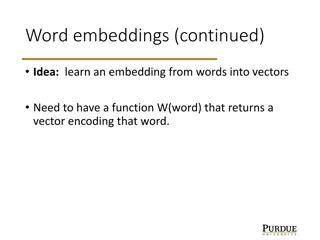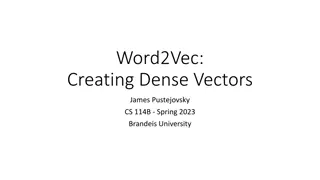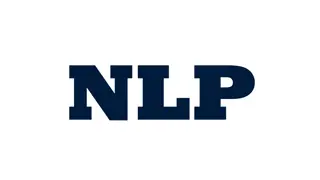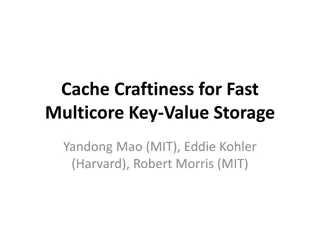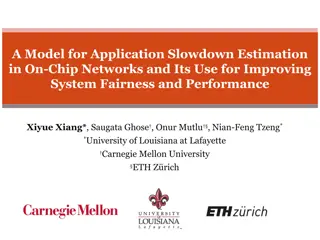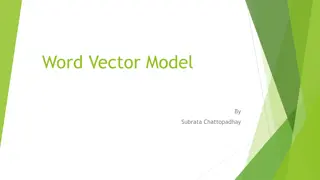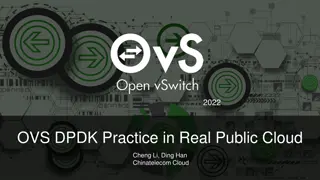Optimizing Word2Vec Performance on Multicore Systems
This research focuses on improving the efficiency of Word2Vec training on multi-core systems by enhancing floating point throughput, reducing overheads, and avoiding any accuracy loss. The study combines optimization techniques to achieve parallel performance and evaluates the accuracy of the results. Various experiments and results are presented to showcase the impact of optimization on Word2Vec performance.
Download Presentation

Please find below an Image/Link to download the presentation.
The content on the website is provided AS IS for your information and personal use only. It may not be sold, licensed, or shared on other websites without obtaining consent from the author.If you encounter any issues during the download, it is possible that the publisher has removed the file from their server.
You are allowed to download the files provided on this website for personal or commercial use, subject to the condition that they are used lawfully. All files are the property of their respective owners.
The content on the website is provided AS IS for your information and personal use only. It may not be sold, licensed, or shared on other websites without obtaining consent from the author.
E N D
Presentation Transcript
Optimizing Word2Vec Performance on Multicore Systems Vasudevan Rengasamy, Tao-Yang Fu, Wang-Chien Lee, Kamesh Madduri The Pennsylvania State University 1
Acknowledgement This research is supported in part by the US National Science Foundation grants ACI-1253881, CCF-1439057, IIS-1717084, and SMA-1360205. This work used the Extreme Science and Engineering Discovery Environment (XSEDE), which is supported by National Science Foundation grant number ACI-1548562. 2
Outline Introduction Motivation for Word Embeddings Prior work on optimizing Word2Vec Our Context Combining optimization Experiments and Results Parallel performance Evaluating Accuracy Conclusion and Future work 3
Word embedding Learn low dimensional vector representation for words sunny bright Vectors of similar words are closer in the vector space Applications: Document classification Machine translation Named entity recognition large 4
Word2Vec: A Word Embedding Technique Skip-gram model: Learn word representations by predicting words that occur in the same context as the target word Input context Target word 5
Two applications of Word2Vec Word Similarity Word Word Similarity score football soccer 0.83 television radio 0.76 precedent group -0.05 listing proximity -0.06 Word Analogy Question Predicted Word greece:athens france:? paris greece:athens china:? beijing 6
Aim Improve efficiency of Word2Vec training on multi-core systems by Improving floating point throughput Reducing overheads Avoid any accuracy loss due to performance optimization 7
Training SGNS model 1. Select target word, input context Target word 2. Generate Samples day, bright, + day, sunny, + desert, bright, - largest, sunny, - 3. Update model parameters using Stochastic Gradient Descent (SGD) P(bright) day P(sunny) Word2Vec P(desert) Update weights 8
pWord2Vec Idea: Share negative samples among same context words [2] Advantages: Matrix multiplications which are compute bound Limitations: Small matrix Less floating point throughput Overhead to create dense matrices 10
Context Combining: Overview C1, C2 Related windows sharing samples 12
Preprocessing Training Data segment Create Inverse index for finding target word positions in training data segment It is a bright sunny day. Sahara is the largest desert. Inverse Index Used for finding related windows that contain a given word as the target CSR representation CSR representation used It is a bright sunny day Sahara the largest desert Index 0 1 3 4 5 6 7 8 9 10 wOffset 0 1 7 2 3 4 5 6 8 9 10 14
Experimental Setup System Description 1. Stampede supercomputer at TACC 2 x 8-core Intel Xeon E5 (Sandy Bridge) processors and 32GB DDR3 memory 2. Stampede2 supercomputer at TACC - 1 68 core Intel Xeon Phi 7250 Knights Landing (KNL) processor with 4 way SMT, 96 GB DDR4, 16 GB MCDRAM Note: All our experiments were run on a single compute node. Datasets Training Data Test datasets 1. text8 17M words, Vocabulary Size 71K 2. 1 billion word benchmark (1B) 805M words, Vocabulary size 1.1M 1. WordSim353 (ws353) for word similarity test 2. Google analogy queries for word analogy tests 16
Multi-core performance comparison Intel KNL: 272 threads Intel Sandy Bridge: 16 threads For 1B dataset, pSGNScc achieves 1.28x speedup over pWord2Vec in Stampede and 1.11x speedup in Stampede2 17
Breakdown of time Index overhead, Create inM, Update Min pWord2Vec is faster Create outM, SGD computations, Update Mout pSGNScc is faster 18
Evaluating Accuracy Similarity Analogy Method text8 1B text8 1B Word2Vec .671 .636 .297 .330 pWord2Vec .682 .639 .309 .327 pSGNScc .685 .633 .322 .328 text8 Accuracy of pWord2Vec and pSGNScc better than Word2Vec 1B Accuracy of 3 methods are comparable 20
Performance impact of T and C Value of T 100K 500K 1M 2M Time per epoch (s) 220.13 196.03 196.74 201.13 Index time (s) 17.20 14.85 17.97 24.22 Avg. related windows ( 8) 5.49 7.53 7.80 7.92 Value of C 1 4 8 16 Time per epoch (s) 258.38 208.45 196.03 191.08 Index time (s) 3.16 12.47 14.92 20.25 SGD Computations (s) 129.94 108.27 102.12 95.69 21
Conclusion Proposed new optimization technique called Context Combining for Improving floating point throughput Reducing Overhead Speedup of up to 1.28x over pWord2Vec and 3.53x over Google s multi-threaded C implementation Accuracy comparable to state-of-the-art implementations 23
Future Work Floating point throughput is still less than peak performance Explore alternate approaches context combining Optimize Word2Vec for GPUs Support distributed memory parallelism 24
References 1 Tomas Mikolov, Kai Chen, Greg Corrado, and Jeffrey Dean. 2013. Efficient Estimation of Word Representations in Vector Space. In Proc. Int l. Conf. on Learning Representations (ICLR) Workshop. Shihao Ji, Nadathur Satish, Sheng Li, and Pradeep Dubey. 2016. Parallelizing Word2Vec in Multi-Core and Many-Core Architectures. In Proc. Int l. Workshop on Efficient Methods for Deep Neural Networks (EMDNN). Recht, B., Re, C., Wright, S., & Niu, F. (2011). Hogwild: A lock-free approach to parallelizing stochastic gradient descent. In Advances in neural information processing systems. Levy, O., Goldberg, Y., & Dagan, I. (2015). Improving distributional similarity with lessons learned from word embeddings. Transactions of the Association for Computational Linguistics, 3, 211-225. 2 3 4 25
Paper doi>10.1145/3149704.3149768 GitHub Source code : vasupsu/pWord2Vec.git GitHub Artifact : vasupsu/IA3_Paper16_ArtifactEvaluation.git Thank You Questions? For questions, Email: vxr162@psu.edu 26
Skip-gram with Negative Sampling Skip-gram model is slow due to Softmax function O(V) computation per sample Skip-gram with Negative Sampling (SGNS) model reduces the complexity For each target word, choose K words (typically 5-25) at random from the vocabulary Target word = positive sample K Random words = negative samples 27
Skip-gram with Negative Sampling Probability calculation under SGNS model K logP(y| x)= logsig(vxvy)+ logsig(-vxvi) i=1 Time complexity for processing 1 sample: O(K) SGNS training: Use SGD to maximize P(y|x) for positive samples and minimize for negative samples Parallelism achieved by processing contexts asynchronously (ignoring race conditions) 28
Context Combining: Steps Training Data T words Read T words, Mark target words as Unprocessed Preprocess Select an unprocessed target word Yes Identify C-1 related windows Perform SGD updates No Unprocessed target word present? Epoch < I ? Mark target words as Processed No 29 Output Model Parameters
Skip-gram with Negative Sampling Target word Input context Drawback: Vector products are memory-bound 30






